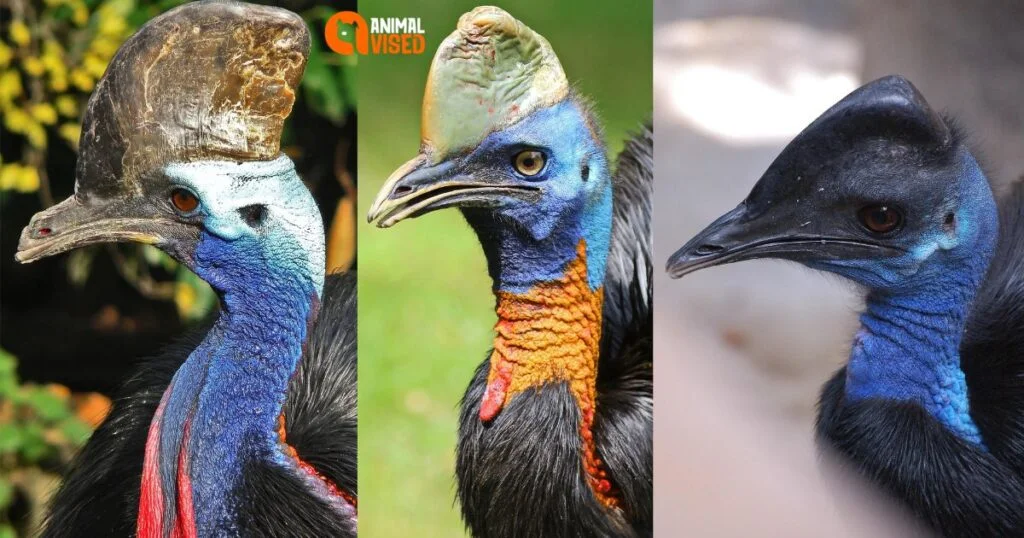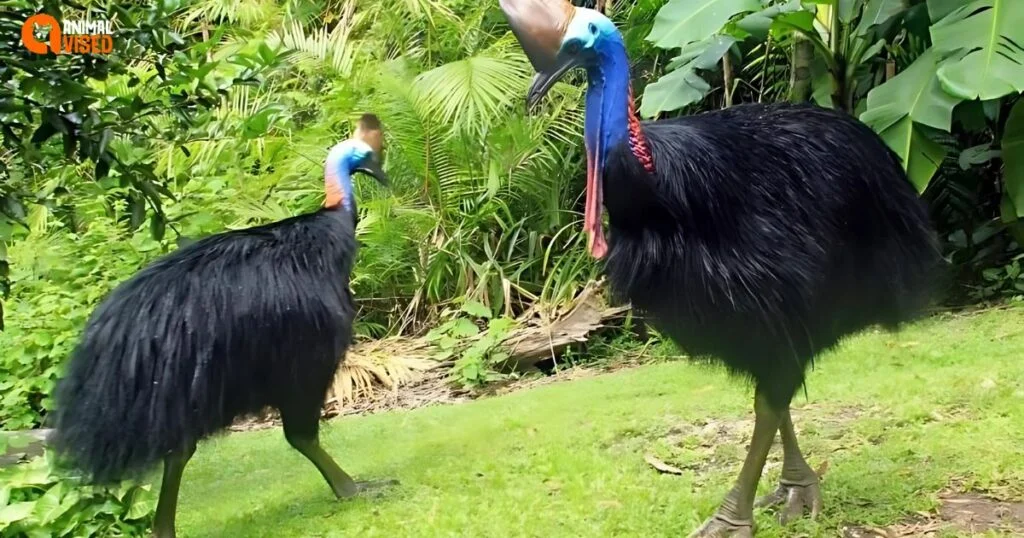Welcome to Animal Vised, your go-to source for all things related to the fascinating world of animals. Today, we’re excited to highlight an important event: World Cassowary Day. This special day is dedicated to raising awareness about the cassowary, one of the most unique and impressive birds on the planet.
What is World Cassowary Day?
World Cassowary Day is celebrated annually on September 26th. This day aims to educate the public about the cassowary, its habitat, and the challenges it faces. The cassowary is a large, flightless bird native to the tropical rainforests of New Guinea and northeastern Australia. It is the third-tallest and second-heaviest living bird, standing at an impressive height of up to 6 feet (1.8 meters) and weighing up to 129 pounds (58.5 kilograms).
Read More: Cute Cats

Why Celebrate World Cassowary Day?
Celebrating World Cassowary Day is crucial for several reasons:
- Conservation Awareness: The cassowary is listed as “Vulnerable” on the IUCN Red List due to habitat loss, hunting, and vehicle collisions. Raising awareness about these threats can help in the conservation efforts to protect this magnificent bird.
- Educational Opportunity: World Cassowary Day provides an opportunity to educate people about the unique characteristics and behaviors of the cassowary. This knowledge can foster a deeper appreciation for the bird and its ecosystem.
- Community Engagement: Events and activities organized on World Cassowary Day bring together communities, conservationists, and wildlife enthusiasts to work towards the common goal of protecting the cassowary and its habitat.
Unique Features of the Cassowary
The cassowary is known for its distinctive features:
- Casque: The most striking feature of the cassowary is its casque, a large, bony crest on its head. The purpose of the casque is still a subject of debate among scientists, but it is believed to play a role in communication and dominance displays.
- Powerful Legs: The cassowary has powerful legs with sharp claws, making it one of the most dangerous birds in the world. Its strong kick can cause serious injuries to humans and other animals.
- Vibrant Plumage: The World Cassowary Day plumage is glossy black, with a bright blue neck and red wattles. This vibrant coloration is particularly striking and adds to the bird’s majestic appearance.
Threats to the Cassowary
Despite its formidable appearance, the World Cassowary Day faces several threats:
- Habitat Loss: Deforestation and land clearing for agriculture and development are the primary threats to the cassowary’s habitat. The loss of rainforests not only affects the cassowary but also the entire ecosystem it supports.
- Hunting: Cassowaries are hunted for their meat and feathers, which are used in traditional ceremonies and crafts. This hunting pressure further depletes their populations.
- Vehicle Collisions: As human settlements encroach on the World Cassowary Day habitat, vehicle collisions have become a significant cause of mortality for these birds.
How many cassowaries are left in the world
The population of cassowaries, particularly the Southern Cassowary, is estimated to be around 4,000 individuals. The majority of these are found in Australia, with a smaller population in Papua New Guinea and nearby islands. Their numbers are declining due to habitat loss, making population estimates uncertain but concerning for conservation efforts.
Why are cassowaries endangered
Cassowaries are endangered primarily because of habitat destruction, World Cassowary Day deforestation, and urban development, which reduce their natural rainforest environments. Additionally, vehicle strikes and dog attacks contribute significantly to cassowary deaths. The fragmentation of their habitat makes it difficult for them to find food and mates, further endangering their World Cassowary Day survival.
Why does the world need cassowaries
Cassowaries play a crucial role in rainforest ecosystems as “keystone species.” They are vital for seed dispersal, helping regenerate forests by spreading the seeds of various fruit trees over large distances. Without cassowaries, many plant species would struggle to reproduce, leading to negative effects on biodiversity and forest health.
Cassowary threats and predators
Aside from natural predators like crocodiles, cassowaries face numerous threats from human activities. These include road traffic, habitat destruction, and predation from domestic dogs. Their eggs and chicks are also vulnerable to wild pigs and feral animals, which can destroy nests or harm young cassowaries.
Cassowary deaths per year

On average, 20 to 40 cassowaries die each year, primarily due to vehicle collisions and attacks from domestic dogs. These numbers fluctuate depending on conservation efforts and environmental changes, but even small increases in mortality rates can significantly impact their already small population.
How can we help the Southern World Cassowary Day
Conservation efforts to protect the Southern World Cassowary Day focus on habitat restoration, reducing vehicle strikes through road signage and wildlife corridors, and community education to prevent dog attacks. Supporting protected areas, planting native trees, and reporting sightings to local wildlife authorities also help safeguard this endangered species (World Cassowary Day).
Southern cassowary lifespan
In the wild, Southern Cassowaries can live up to 40 to 50 years, although threats like habitat loss and human activities often shorten their lifespan. In captivity, they may live longer due to the absence of predators and controlled living conditions.
Conclusion:
World Cassowary Day serves as a critical reminder of the importance of conserving one of the world’s most unique and endangered species, the cassowary. This day is not just about celebrating the beauty and ecological significance of these remarkable birds, but also about raising awareness of the threats they face, including habitat loss, vehicle strikes, and dog attacks.
The collective efforts of conservation organizations, communities, and individuals on this day underscore the power of unity in protecting our natural heritage. Educational initiatives, habitat restoration projects, and advocacy for stronger wildlife protection policies are all steps in the right direction. However, the work does not end with a single day of recognition. It is imperative that we continue these efforts year-round to ensure the survival of cassowaries and the ecosystems they inhabit.
As we reflect on World Cassowary Day, let us commit to taking actionable steps towards preserving these magnificent creatures. Whether through supporting conservation efforts, reducing our ecological footprint, or spreading awareness, each of us has a role to play. Together, we can create a future where cassowaries thrive, and their unique contribution to our planet’s biodiversity is safeguarded for generations to come.
Read More: World Cassowary Day
FAQs:
Q: When is World Cassowary Day celebrated?
A: World Cassowary Day is celebrated on September 26th each year.
Q: Why is World Cassowary Day important?
A: This day is important because it highlights the plight of the cassowary, which faces numerous threats such as habitat loss and vehicle strikes. Raising awareness can lead to increased conservation efforts.
Q: What is a cassowary?
A: A cassowary is a large, flightless bird native to the tropical forests of New Guinea, nearby islands, and northeastern Australia. It is known for its distinctive casque on its head.
Q: Why are cassowaries endangered?
A: Cassowaries are endangered due to habitat destruction, vehicle collisions, dog attacks, and other human-related activities.
Q: How can I participate in World Cassowary Day?
A: You can participate by spreading awareness on social media, supporting conservation organizations, attending local events, and educating others about the importance of cassowary conservation.
Q: What are some threats to cassowaries?
A: Major threats include habitat loss due to deforestation, vehicle strikes, dog attacks, and disease.
Q: How can I help protect cassowaries?
A: You can help by supporting conservation organizations, reducing your ecological footprint, advocating for stronger wildlife protection policies, and spreading awareness.
Q: Are there any specific conservation projects for cassowaries?
A: Yes, there are several projects focused on habitat restoration, road signage to prevent vehicle strikes, and community education programs.

Q: What role do cassowaries play in their ecosystem?
A: Cassowaries play a crucial role in seed dispersal, helping to regenerate rainforests by spreading the seeds of over 230 plant species.
Q: How many species of cassowaries are there?
A: There are three species of cassowaries: the southern cassowary, the northern cassowary, and the dwarf cassowary.
Q: Where can I see a cassowary?
A: Cassowaries can be seen in their natural habitats in the tropical rainforests of New Guinea and northeastern Australia. Some zoos and wildlife sanctuaries also house cassowaries.
Q: What is the lifespan of a cassowary?
A: Cassowaries can live up to 40-50 years in the wild, although their lifespan can be shorter due to various threats.
Q: What do cassowaries eat?
A: Cassowaries are primarily frugivorous, feeding on a variety of fruits. They also consume small animals, insects, and fungi.
Q: Are cassowaries dangerous?
A: Cassowaries can be dangerous if provoked or threatened. They have powerful legs and sharp claws that they use for defense.
Q: How big are cassowaries?
A: Cassowaries are the third-tallest and second-heaviest living bird. They can reach heights of up to 6.6 feet (2 meters) and weigh up to 154 pounds (70 kg).
Q: What is the casque on a cassowary’s head for?
A: The casque is believed to serve multiple purposes, including protecting the bird’s head, amplifying its low-frequency calls, and possibly aiding in thermoregulation.
Q: How do cassowaries communicate?
A: Cassowaries communicate through a variety of vocalizations, including deep booming calls, hisses, and grunts. They also use body language and displays.
Q: What is the mating behavior of cassowaries?
A: Cassowaries are polygamous, with males typically mating with multiple females. The males also take on the primary responsibility of incubating the eggs and caring for the chicks.
Q: How can I support cassowary conservation financially?
A: You can donate to conservation organizations that focus on cassowary protection, such as the Rainforest Rescue, Save the Cassowary, and other wildlife conservation groups.
Q: What are some key conservation organizations working to protect cassowaries?
A: Organizations like Rainforest Rescue, Save the Cassowary, and the World Wildlife Fund (WWF) are actively involved in cassowary conservation efforts.










